14 Days
Moderate
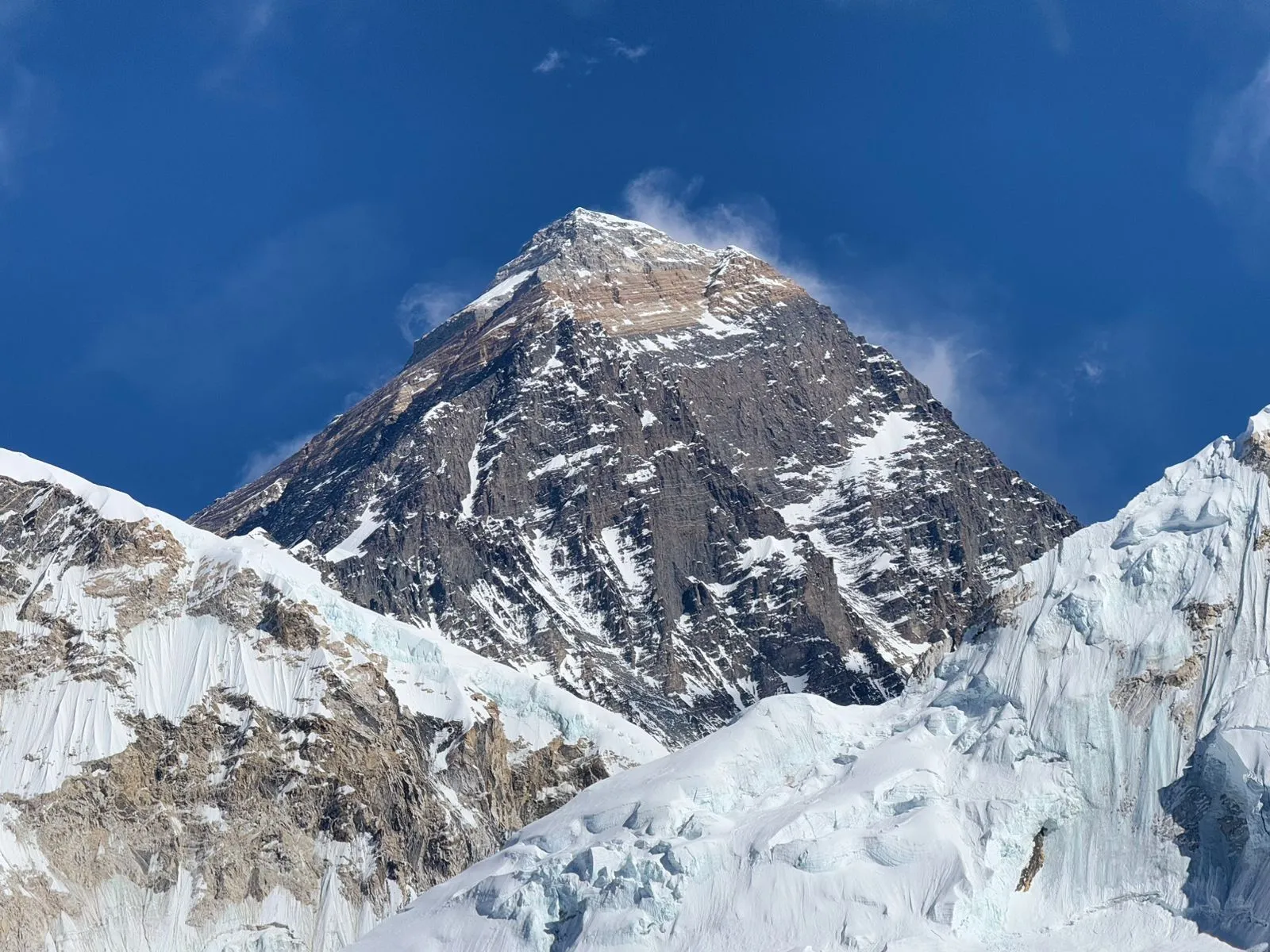
Nepal is a famous destination for trekking, with its 14 highest mountains like Mount Everest. There are many different trekking opportunities in Nepal, ranging from difficult high-altitude trails to easy paths in the Nepalese himalayas. The country’s beautiful scenery and friendly people make it a top choice for those looking for adventure.
If you like climbing mountains or trekking, Nepal is the perfect destination for you. Treks like the Everest Base Camp Trek and Annapurna Circuit Trek are well-known for their stunning views and enjoyable experiences. During your journey, you will meet friendly locals in small villages. Nepal’s diverse cultures and vibrant celebrations make your trek even more interesting. Furthermore, the country has a remarkable range of plants and animals to discover, including rhododendron forests and snow leopards.
Trekkers in Nepal can enjoy the comfort of tea houses along their journey, where they can relax, eat, and chat with others. These cozy accommodations make planning a trek easier and more convenient.
When going on a trek, it is crucial to choose the best season for trekking to ensure a safe and enjoyable experience. The climate in the area influences the best times for trekking, with each season presenting its own pros and cons. Therefore, having knowledge of the most suitable times to begin a trek in Nepal is key for effective planning and a fantastic adventure.
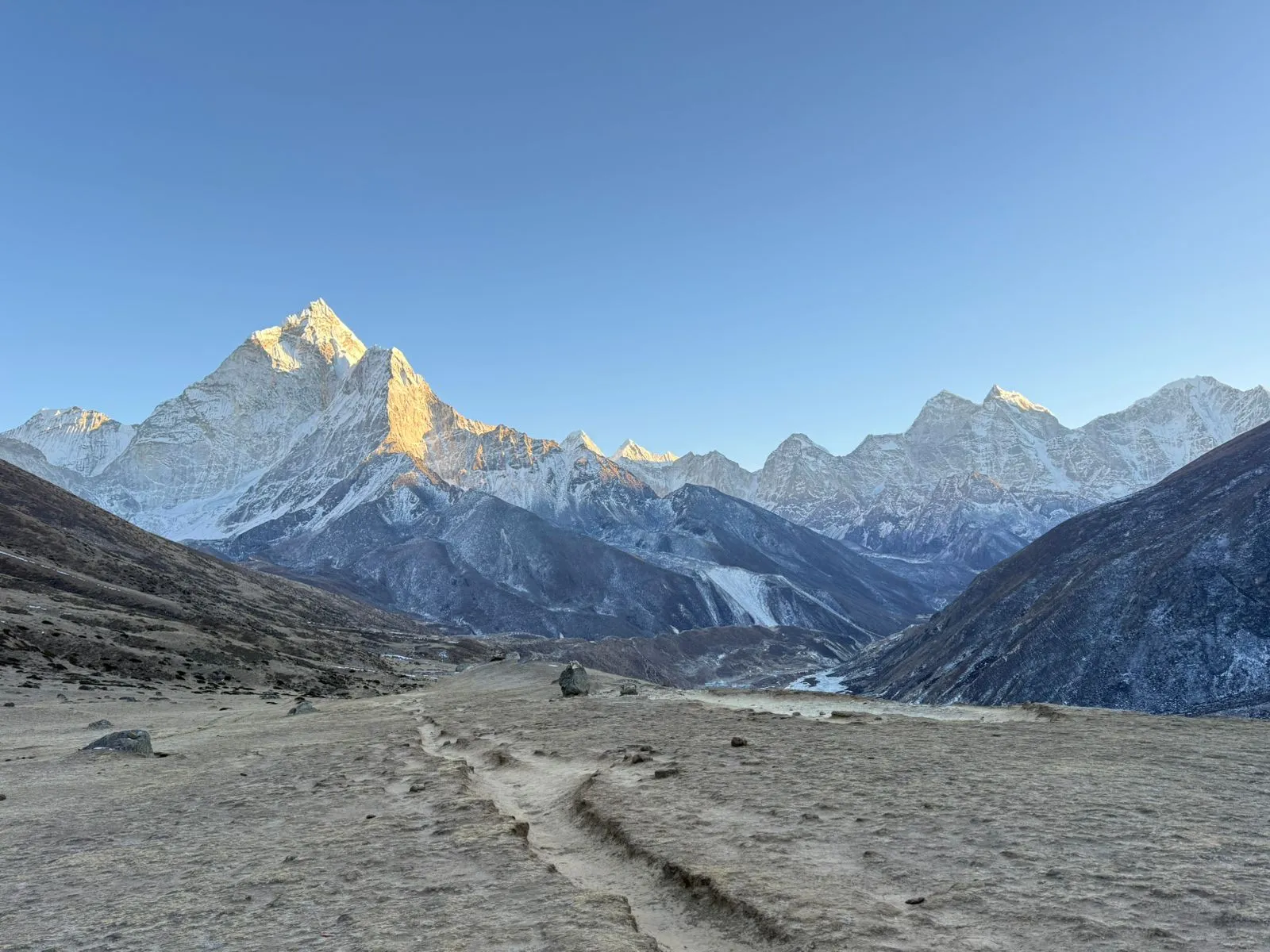
Nepal’s most popular trekking seasons are spring and autumn. Between March and May, as well as September and November, the weather is clear and perfect for enjoying the beautiful views of the mountains.
When spring arrives, the trails are covered with beautiful flowers, creating a stunning sight for hikers and photographers. However, it can be crowded on famous routes like Everest Base Camp. In autumn, the clear skies and fresh air offer the best mountain views, attracting trekkers from around the world.
If you want a calm and peaceful experience with fewer people around, consider visiting during the off-peak seasons of winter and monsoon. Winter can be cold, with snowy paths, but the serene beauty of the snow-covered landscapes makes it worthwhile. On the other hand, trekking during the monsoon offers vibrant green scenery and solitude, despite the challenges of rain and landslides. Areas like Upper Mustang and Dolpo are protected from heavy rain during the monsoon.
Ultimately, when it comes to trekking in Nepal, the best time to go will depend on what you value most in your adventure. Choosing the right time for trekking in Nepal depends on several factors, including the condition of the trails, the scenery, how crowded it is, and the weather. Another important thing to think about is your personal preference for the trekking experience, like whether you enjoy being alone or being with others.
As the seasons change, the trails also transform, giving hikers a unique experience every year. During winter, the paths are covered in snow, transforming the landscape into a magical winter scene. Hikers can enjoy the tranquility of the snow-covered trails, but they should also be prepared for the challenges it brings. In spring and autumn, the trails are easier to navigate without the snow.
When the monsoon season comes, trekkers need to be careful of the slippery trails and the soil erosion from water. The plants are very green and beautiful, but trekkers must stay alert for any sudden changes in the weather. It is important to plan well and have the right equipment to stay safe while hiking during the monsoon season.
During your trek, you’ll see different beautiful views depending on the time of year. In the spring, the landscape is full of bright, colorful flowers that look amazing. When autumn comes, you can see the Himalayan mountains clearly and watch the leaves change color.
In the winter, the trek turns into a snowy landscape that is calm and surreal. The snow covering the ground makes it peaceful and perfect for reflection. Walking through the snow brings a sense of tranquility and wonder, as trekkers explore a winter wonderland that seems to be from another world. When the monsoon season arrives, the forests along the trek come alive with lush greenery that covers the land in green. The bright green foliage contrasts beautifully with the clear blue sky, creating a soothing and invigorating scene.
Trekking during the peak seasons of spring and autumn tends to attract a large number of trekkers, which could result in crowded trails and fully-booked accommodations.
However, the winter and monsoon seasons provide peaceful trails, perfect for those seeking solitude and a break from busy trekking paths. During winter, hikers can admire the beautiful snow-covered landscapes and clean, refreshing air. The calm atmosphere on the trails at this time allows for a more introspective and meditative trekking experience.
Weather plays a vital role in trekking safety and the overall enjoyment of the experience. Spring and autumn are preferred seasons for their stable weather conditions and minimal precipitation, offering trekkers an enjoyable journey.
However, winter can be tough with heavy snowfall, requiring extra caution and preparation. The monsoon season brings frequent rain showers, affecting trail accessibility and visibility, making it important for trekkers to plan accordingly.
When getting ready for a trek, it’s important to think about what you really like and want. Some hikers enjoy chatting with others and making new friends along the way. They like the feeling of creating lasting memories together. Others prefer being by themselves in nature. They like the peace and quiet that comes with it, feeling more in touch with the environment and themselves. Both options give you a chance to learn and discover more about yourself.
If you love adventure, winter treks are sure to excite and challenge you. The snowy landscapes provide a stunning backdrop for exploration, testing your skills and endurance. In contrast, the lush ambiance of the monsoon season offers a different kind of beauty and excitement, with vibrant vegetation and unpredictable weather patterns.
By evaluating these factors closely, trekkers can decide on a time of year that matches their preferences and how prepared they are, ensuring they have a memorable and satisfying hiking experience in the amazing landscapes of Nepal.

The country of Nepal is famous for its many different landscapes and cultural activities that bring in trekkers from all around the globe. It is essential to know the ideal time for trekking in Nepal in order to fully enjoy the beautiful scenery and culture of this mountainous region.
Understanding the different seasons is necessary for planning a successful trekking trip. In this section, we will explore the different seasons in Nepal and how they impact trekkers.
Trekking in Nepal is most enjoyable during the spring season because of the warm weather and comfortable temperatures. Trekking during the day is a great experience, especially when you reach higher altitudes and can admire the clear views after the snow has melted.
When spring arrives, you’ll notice the hillsides covered with blooming rhododendrons in all their colorful glory. These beautiful flowers make trekking more exciting and display Nepal’s stunning natural beauty. If you’re interested in plants, this is a very enjoyable time.
When spring arrives, the Annapurna Circuit and Everest Base Camp become more popular. While these routes are quite scenic, it’s important to be aware that there will be more people around, which could disturb the tranquility of nature.

Autumn is arguably the most popular trekking season in Nepal. The monsoon rains clear the dust and pollution from the atmosphere, resulting in crisp, clear skies and excellent visibility. The low humidity levels also contribute to clear, unobstructed views of the majestic Himalayas.
Temperatures during autumn vary but are generally pleasant, neither too cold nor too warm. This weather condition is perfect for trekking, allowing enthusiasts to trek for longer periods without extreme discomfort.
The autumn season in Nepal is filled with important festivals. This means that trekkers not only get to enjoy the beauty of nature but also get a glimpse into the rich local culture. Festivals like Dashain and Tihar offer a unique cultural element to the trekking journey.
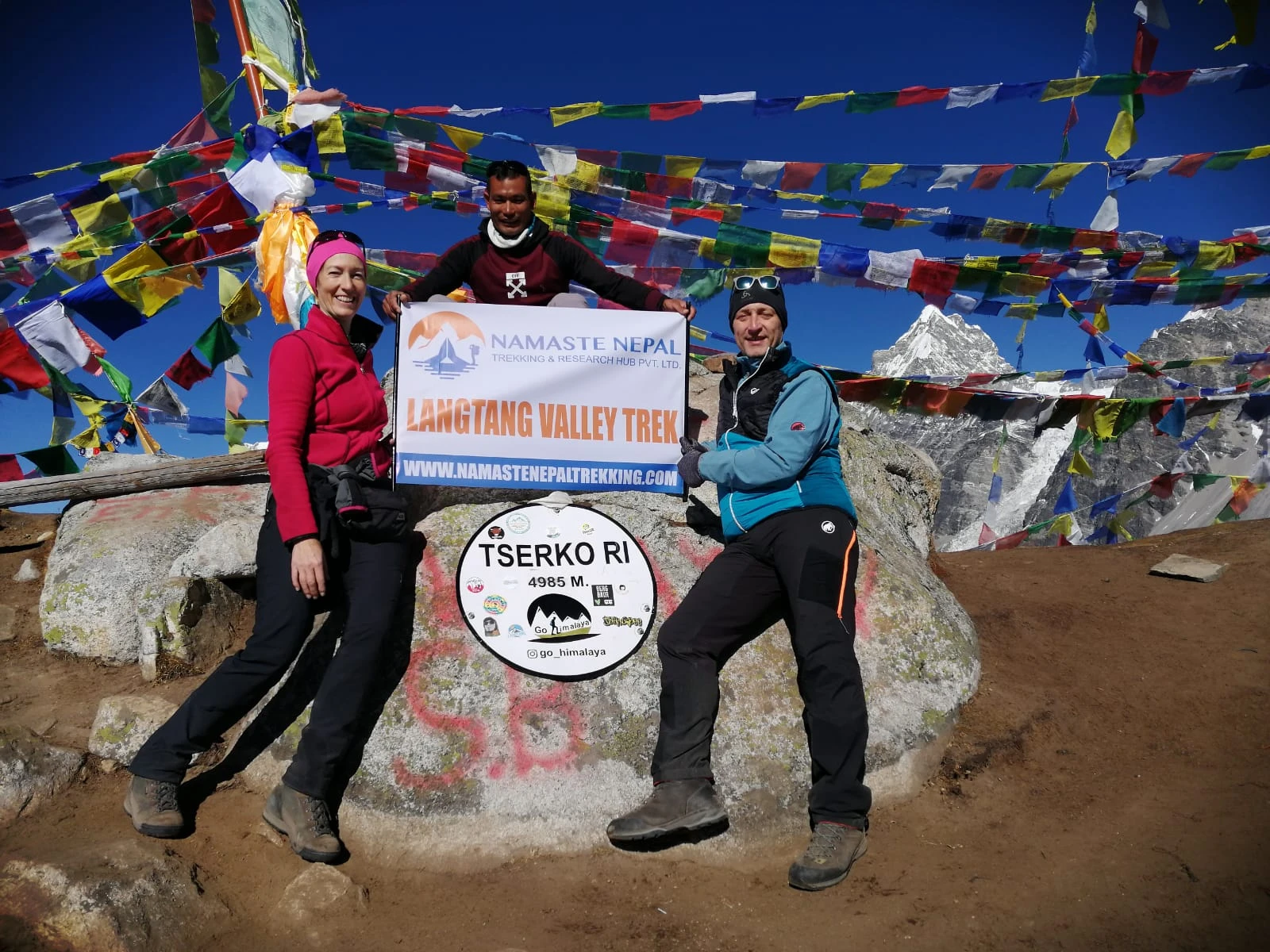
Winter in Nepal can be tough, but it can also be rewarding. It is usually very cold, especially at higher elevations. However, the paths below 3,000 meters are usually open and less crowded, making it a good time for people who like solitude.
The winter snow adds to the beauty of the scenery. Places like Ghorepani and Ghandruk have minimal snowfall, allowing for gorgeous views without the difficulties of high-altitude treks.
It is essential to prepare for cold weather, especially at night when the temperature can drop significantly. Trekkers should pack the appropriate gear and clothing for the cold weather.

The monsoon season in Nepal brings heavy rainfall, making it tough for trekkers in many regions. The paths get messy and slippery, and there is more danger of landslides, especially on mountain trails. In the monsoon season, when it rains a lot, the landscape becomes full of greenery and blooming flowers, offering a different kind of beauty that stands out from the dry seasons.
In the monsoon season, there are fewer visitors on the trails, so they are not as crowded. Some trekkers enjoy having more peace and quiet during this time, despite the challenges of hiking in the rain. Places like Upper Mustang or Annapurna Circuit receive less rainfall during the monsoon season, making them good options for exploration.

Trekking in Nepal is a unique experience that varies with the seasons. Many people choose spring and autumn for their pleasant weather and clear views. Winter is calm with snow, but preparation is key. Monsoon, while challenging, provides the opportunity to witness Nepal’s lush beauty and enjoy deserted trails for those seeking solitude.
Understanding the seasonal impacts when planning a trek in Nepal can greatly increase your trekking experience. This way, you can appreciate not only the trek itself but also the variety of natural and cultural riches in the country. Always keep in mind your personal preferences and how prepared you are when deciding on the best trekking season for your adventure in Nepal.
Nepal is full of mountains and is a great place for trekking. The best seasons to go trekking in Nepal are spring and autumn because the weather is pleasant and you can see amazing natural beauty.
Why Spring and Autumn are the Peak Seasons for Trekkers
The most popular times for trekking in Nepal are spring and autumn. The weather is usually stable during these months, so you won’t have to deal with extreme temperatures or bad weather.
Below are a few reasons why these seasons are preferred:
The best times to trek in Nepal are spring and autumn because the weather is nice, the landscapes are colorful, and you can learn about different cultures. Going during these seasons, whether you are an experienced trekker or a beginner, will make your trip to the Himalayas special.
Below are some of the most popular treks that captivate trekkers during Nepal’s spring and autumn seasons:
The Everest Base Camp Trek is famous all over the world because of its incredible natural beauty and exciting adventures. Many people come from different countries to go on this trek. It is not just about getting to the famous Everest base camp but also about exploring the culture and spirituality of the area. As you journey through the Khumbu region, you will pass by lovely Sherpa villages where you can experience the unique lifestyle and warm hospitality of the Sherpa people. These villages are full of tradition and history, giving you a peek into ancient customs and practices that have been maintained for generations.
While trekking, you will encounter ancient monasteries, some of which are situated high on cliffs. These monasteries represent the deep spiritual heritage of the region and offer a peaceful setting that stands in contrast to the rugged scenery.

When you reach the end of the journey, you will be met with an amazing view of Mount Everest, which is the tallest peak in the world. This sight is truly awe-inspiring and will stay with you for a long time. It is recommended to go on this trek during the stable weather of autumn or spring, as this will ensure that you have clear views of the snow-covered mountains along the way.
The weather is usually calm during these seasons, making it the perfect time for trekking and fully experiencing the beauty of the Everest region without having to deal with harsh weather conditions.
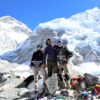
14 Days
Moderate
The Annapurna Circuit Trek is a great way to explore the Annapurna region and learn about the local cultures in the area.
In the autumn and spring seasons, the trail is incredibly captivating, with clear paths that reveal uninterrupted views of the majestic mountain scenery. During the autumn, the air is crisp and cool, and the changing leaves create a beautiful landscape. In spring, colorful rhododendrons and wildflowers bloom, adding bursts of color to the scene.
Both seasons provide unique opportunities to admire the natural beauty and tranquil atmosphere of the Annapurna region, making it a perfect time for adventurers to explore and enjoy this unforgettable trek.
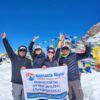
16 Days
Difficult
The Langtang Valley trek is a truly exciting expedition famous for its beautiful natural scenery and thrilling landscapes. This trek will guide you through a variety of terrains, beginning with dense, vibrant forests that are home to a rich diversity of plants and animals. As you journey further, you will travel through expansive yak pastures where you can see these gentle creatures grazing peacefully. The path also passes through charming Tamang villages, offering a glimpse into their cultural heritage and warm hospitality.
In spring, the Langtang Valley trek is beautiful with its colorful wildflowers adding a touch of magic to the scenic trail. Autumn brings clear skies and stunning panoramic views of the towering mountains. Each season offers its own beauty, making the trek a memorable experience for those who dare to take on its challenges.
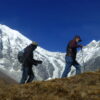
8 Days
Moderate
This trek is well-known for having fewer people compared to other popular routes. It offers an exciting journey around Mount Manaslu. You will have the chance to experience the rich culture of the local communities and enjoy their warm welcome. The landscape is impressive, with lush valleys, rivers, and snowy peaks.

The best time to go trekking is in the autumn and spring seasons when the skies are clear and the temperatures are comfortable. You’ll see amazing views and beautiful flowers, making the hike a great experience. This trail is not only a physical challenge but also an opportunity to discover Nepal’s rich culture and natural wonders.
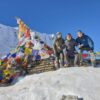
12 Days
Moderate
This trek is famous for being short and easy. Lots of people like it because they can see the sunrise from Poon Hill, which is amazing. You can see all the big mountains in the Himalayas from there. The best time to do this trek is in the spring when the rhododendron forests have colorful flowers. It is a great time to see the beauty of the route.
On the other hand, during the autumn season, trekkers can witness amazing views in the morning. The clear skies provide unobstructed views of the vast mountain ranges. Both seasons offer distinct and incredible experiences for those who take on this adventure. It will be a memorable journey for nature enthusiasts and photographers
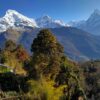
7 Days
Easy
Nepal is famous for its trekking spots, attracting people worldwide who want to enjoy its amazing scenery and culture. The best times to trek are usually in autumn and spring, when the weather is clear and mild.
However, winter and monsoon seasons offer their own unique experiences and challenges. Knowing the benefits, risks, and preparations needed for trekking during these off-seasons can make the adventure even more rewarding for those open to surprises.
Trekking in the Winter and Monsoon season in Nepal is a great experience. The trails are less crowded, so it is peaceful. The snow on the mountains makes the views incredible. The clear skies make it easy to see far away and enjoy the scenery.
When it’s winter or monsoon, there are less people trekking. This gives those who do go at this time a chance to enjoy the beauty and quiet of Nepal’s landscapes. The popular trails can be busy during peak times, so going off-season allows for a more peaceful and relaxing experience in nature.
In these quiet months, visitors can engage in genuine cultural exchanges with locals in the community. With fewer tourists present, trekkers can gain insights into the daily life of residents and participate in traditional activities. This can lead to meaningful experiences and open conversations about the region’s heritage.
During the winter and monsoon seasons, the landscapes change a lot and become really captivating for experienced hikers. In the winter, the trails get covered in snow, creating a beautiful view. This change gives photographers a chance to take amazing photos of Nepal from a different angle.
On the other hand, the monsoon season brings a lot of lush greenery and bursts of color to the land. Walking through the rain-fed forests and terraced farmlands under the rich canopy offers a striking difference from the dry seasons. The mist and clouds during the monsoon give a mystical quality to the hillsides and foothills, creating dramatic and mesmerizing views.
In the off-season, fewer trekkers are on the trails, meaning that the accommodations and services improve greatly. Trekking enthusiasts can enjoy a wider range of rooms and facilities at the well-visited tea houses. This not only ensures more comfort but also leads to better service and personalized hospitality.
Moreover, reduced demand can sometimes lead to more competitive pricing for both accommodations and trekking packages. Guides and porters, less stretched during off-seasons, may also be more flexible, allowing for personalized itineraries and the opportunity to build a rapport with those who are working to ensure a successful trek.
During the winter and monsoon seasons in Nepal, there are plenty of cultural and religious festivals that travelers might miss during other times of the year. These off-peak periods provide a unique opportunity to explore the vibrant local culture as communities all over Nepal participate in various traditional events. Engaging in these festivals can provide a deep insight into the spiritual and daily lives of Nepali people.
If you trek in Nepal, you might get to experience festivals like Mani Rimdu and Maghe Sankranti. These cultural celebrations help you learn more about Nepal’s heritage and make your journey even more memorable.
For those who seek not just scenic beauty but also physical challenge, winter and monsoon trekking present additional tests of endurance and resilience. The snowy trails and wet conditions add layers of difficulty that can be particularly appealing to seasoned trekkers looking to push their limits and enhance their trekking skills.
Undertaking these physically demanding journeys in challenging weather conditions necessitates a higher level of fitness and preparation. Successfully navigating such trails can lead to a rewarding sense of accomplishment and fulfillment, offering seasoned and adventurous trekkers the chance to hone their skills and deepen their appreciation for the art of trekking.
Nepal is renowned for its breathtaking scenery and tough trekking routes. It offers some fantastic off-season treks for those who want to stay away from the crowds and see the country in a new way.
One of the popular off-season treks is the Upper Mustang hike during the summer months. This trek gives hikers a chance to delve into the ancient Tibetan culture and unique desert landscapes of the area without the usual crowdedness. These off-season treks in Nepal show a different side of the country and allow for a calmer and more personal hiking experience.
The Upper Dolpo region in Nepal is in the western part of the country and is not well-known to many people. It is a great place to go trekking when it’s not the main tourist season. During the winter, there is a lot of snow, which can make trekking there quite tough. But it’s worth it for the chance to see the untouched wilderness. You can also meet the Dolpo-pa people and see ancient monasteries while taking in the stunning mountain scenery.
For those who enjoy adventure and want to learn about different cultures, the trek is a tough but worthwhile journey. Before setting out, it is essential to plan carefully, have the proper gear, and be aware of the challenges that come with the season to safely explore the beautiful and secluded area of Upper Dolpo.
Upper Mustang is called the “Last Forbidden Kingdom” because of its mountain desert landscapes, preserved Tibetan culture, and mysterious caves. The Annapurna mountains creates a rain-shadow effect that keeps this area accessible during the monsoon months, providing a special trekking experience while the rest of Nepal gets heavy rain.
The ancient Buddhist monasteries and colorful festivals in Upper Mustang’s Lo Manthang make it a special place to visit. The trails are easy to navigate even during the monsoon season, and there are fewer tourists around, making it a perfect off-season destination. The echoes of ancient times in the landscape make it a truly unforgettable experience.
The Rara Lake Trek is situated in the far northwest of Nepal. It is well-known for the beautiful Rara Lake, which is located within Rara National Park. This trek is popular among off-season enthusiasts. Winter enhances the tranquility of the trek, with the lake surrounded by snow-covered hills, providing a peaceful and stunning view.
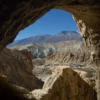
16 Days
Moderate
Although this trek is not very popular, it allows you to explore the remote and culturally rich Karnali region in depth. The lack of foot traffic on the trail means you can appreciate the nature and culture without any disturbance, and the local communities rarely see visitors from outside, making your interactions and exploration more genuine. To travel safely on this serene and secluded route during the off-season, make sure you are well-prepared and have the right gear.
When trekking during the off-season, there are certain risks to be aware of. The weather can be unpredictable and severe, with snowstorms, extreme cold, and heavy rainfall being potential hazards. In addition, trails may be less maintained and harder to navigate due to lower foot traffic. In remote areas, rescue services may be limited in case of emergencies. It’s also important to consider the increased chance of encountering wildlife that may be more active during the off-season.
To ensure a safe hiking experience, it is essential to take proper precautions, like having the right gear, navigation tools, and emergency communication devices.
When winter comes, it brings very cold weather, especially at higher elevations where temperatures drop a lot. Snow and ice can make trails unsafe, making it easier to slip and fall. To protect themselves and stay warm, trekkers need to have the right gear, such as crampons and insulated clothing.
In the monsoon, heavy rains can cause landslides and make trails disappear. Floods can happen, and it can be hard to see in thick fog. This makes it more likely to get lost or have accidents while trekking.
During the winter, snow can block mountain roads and paths, making it tough for people to travel and possibly trapping hikers. Some high-altitude places might not be as easy to get to because of the snow, which could affect the possibility of completing a planned trip. Travelers should be ready to switch up their plans and be willing to make changes as needed during their journey.
In the monsoon season, certain trails may be impossible to pass because of landslides or excessive mud. Make sure to check these trails often and have a plan B in place. It’s also smart to avoid regions that are more likely to have landslides during heavy rain.
During the winter months, the extreme cold can make health issues like hypothermia and frostbite more severe, especially for individuals who are not accustomed to harsh weather conditions. It is important for hikers to have proper thermal clothing and medical supplies available, and to be on the lookout for symptoms of cold-related illnesses.
Trekking during the monsoon season can increase the chance of getting diseases from contaminated water. Make sure to keep yourself clean and drink safe water to avoid getting sick.
In the winter, it can be tough to see the trails because of the snow. This makes navigation more challenging, so it’s important to know how to use maps, compasses, or GPS systems. Be prepared for any confusion on the route and make sure you have prepared enough to navigate on your own or with a guide.
In the monsoon season, fog and clouds can make it hard to see landmarks, leading to confusion. Knowing the trail’s geography well and having reliable navigation tools are important for these treks.
With fewer trekkers and difficult weather, it can be tricky to organize emergency help. The tough conditions mean that air rescue may not be an option, and having fewer people on the trails increases the chance of being isolated during an emergency.
For trekkers going on off-season expeditions, having travel insurance that covers emergency evacuations is crucial. It’s also important to be self-sufficient, especially in isolated areas.
When getting ready for a trek in the offseason, it’s important to plan ahead and pay attention to the details. Choose a destination that is safe and easy to reach, and check the weather and trail conditions. Make sure you have the right gear, such as warm clothes and a first aid kit. Tell someone about your plans and stay informed about any changes in conditions.
Make sure to research the weather patterns for the region and time of your trekking trip. Knowing what temperatures to expect, how much rain might fall, and the possibility of snowfall will help you plan your trip better.
Review and study of maps and guidebooks in the planning phase are essential. Consulting with tour operators or local guides regarding historical weather data and trail conditions during off-seasons supports informed decision-making and itinerary adjustments.
When trekking during the off-season, it is important to have the right gear like warm clothes, water-resistant boots, and a good sleeping bag for winter treks. If you are trekking in the monsoon, make sure to have waterproof outerwear and fabrics that dry quickly.
Using the right gear ensures a higher degree of safety and comfort. Technical tools like trekking poles, traction devices, and navigation aids should be part of the standard pack list, providing stability and directionality in adverse conditions.
Before you go on a trek in the off-season, it is crucial to get physically fit. You need to work on your heart health, build up your strength, and get used to hiking in different conditions. Doing this will help you endure the challenging environment you may face.
Make sure to get medical check-ups before going on a trek to minimize health risks. Pack vaccinations and a medical kit with medications for altitude sickness, cold remedies, and basic first-aid supplies to be prepared.
It is advisable to hire knowledgeable guides who are familiar with off-season trails. This can increase safety and make trekking more enjoyable. These guides understand trail modifications, local weather conditions, and can offer trustworthy navigation and emergency aid.
By utilizing the knowledge of those who live in the region, we can ensure that our interactions with the local culture and religious practices are done with respect and authenticity, making our journey more enriching.
Being prepared for unforeseen circumstances, such as having backup routes, additional travel time, and emergency contact details, can provide a lot of support in difficult situations. Make sure your communication devices are reliable and have backup power sources at hand.
Informing a reliable contact of the trek plans, expected timelines, and process for reaching emergency services in remote areas is important. Trekkers should have a plan in place for regular check-ins to confirm safety and progress.

Going on a trekking adventure in Nepal lets you explore amazing landscapes and enjoy rich cultural experiences. Choosing the best time to go is important for getting the most out of your trip. Each season in Nepal has its own unique weather and scenery, so it’s up to you to decide when to go based on your preferences and what you want to experience.
Spring, lasting from March to May, is a great time for trekking in Nepal. The moderate temperatures and clear skies provide a pleasant atmosphere for trekkers. The trails come alive with colorful blooms of rhododendrons and other local flowers, making the trek a visual delight. Popular routes are filled with fellow adventurers, offering opportunities for interesting interactions and shared experiences.
During the summer monsoon from June to August, there is heavy rainfall, mainly in the lower areas. The scenery becomes lush and green, but trekkers should be ready for muddy trails, possible landslides, and leeches. Despite the rain, this season has the benefit of fewer visitors and the chance to explore quieter paths in drier areas like Mustang and Dolpo, thanks to their location.
Autumn, from September to November, offers beautiful trekking conditions with clear air and amazing views of the Himalayas. This is the best time for breathtaking panoramic sights without the usual haze or humidity. Nepal’s cultural richness is also highlighted during this season, with festivals like Dashain and Tihar adding extra excitement to the trek.
From December to February, winter turns higher areas into a snowy wonderland. Lower regions stay accessible and pleasant, but if you head to higher elevations, be ready for cold and snow. Many find the peaceful, empty trails and stunning snowy peaks worth the chilly weather, making winter trekking very rewarding.
Ultimately, the best time to trek in Nepal really depends on what you want from your adventure. Every season offers unique attractions and challenges, so you can enjoy trekking all year round. Spring brings blooming flowers, summer has lush landscapes, autumn offers clear views, and winter provides solitude. Whatever you choose, you’re sure to have an amazing adventure that matches your own goals and preparedness.